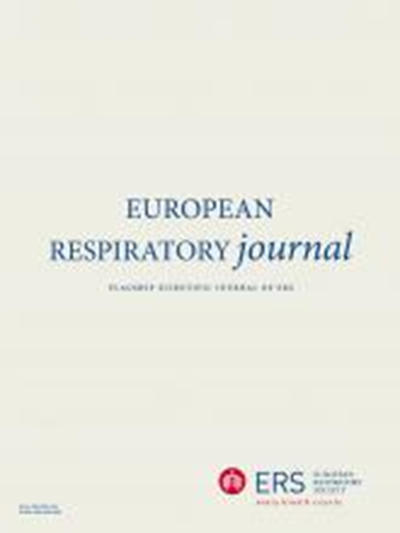Lateral wall collapse from sleep endoscopy and airflow shape predicts hypoglossal nerve stimulation efficacy in obstructive sleep apnea.
IF 21
1区 医学
Q1 RESPIRATORY SYSTEM
引用次数: 0
Abstract
RATIONALE Patient selection for hypoglossal nerve stimulation (HGNS) for obstructive sleep apnea (OSA) requires assessment of pharyngeal site of collapse using drug-induced sleep endoscopy (DISE). OBJECTIVES The current study aims to address two key knowledge gaps: First, we prospectively confirm that, among HGNS candidates, reduced HGNS efficacy is associated with oropharyngeal lateral wall (OLW) collapse (Aim 1). Second, given DISE is resource-intensive procedure and delays treatment, we evaluate whether a recently-developed non-invasive method for identifying OLW collapse using airflow shapes is associated with reduced HGNS efficacy (Aim 2). METHODS Patients who underwent DISE, HGNS implantation, and follow-up sleep testing were included in Aim 1 (n=369) as part of an observational cohort study. For Aim 2, airflow data estimating OLW collapse probability were collected during DISE via pneumotachograph (n=138, DISE Flow cohort); and from a home sleep test via nasal cannula for validation (n=46, HST cohort). Linear regression quantified associations between HGNS efficacy (%reduction in AHI) and DISE-determined OLW collapse (Aim 1) or flow-shape-determined OLW collapse (probability score per 2SD; Aim 2), adjusting for baseline AHI. RESULTS Compared to non-OLW collapse, DISE-determined OLW collapse reduced HGNS efficacy [95%CI] by ‒18.0[‒31.9,‒6.2]%. Increased flow-shape-determined OLW collapse probability (Δ2SD) was associated with reduced HGNS efficacy in both DISE Flow (‒24.8 [‒40.4, ‒11.7]%) and HST (‒22.7 [‒50.0, ‒2.6]%) cohorts. CONCLUSION This study prospectively validates OLW collapse as a key factor in HGNS failure and shows that airflow-based identification of OLW collapse can effectively estimate HGNS efficacy, representing a significant advancement in patient selection for HGNS.睡眠内窥镜下侧壁塌陷和气流形状预测舌下神经刺激对阻塞性睡眠呼吸暂停的疗效。
选择舌下神经刺激(HGNS)治疗阻塞性睡眠呼吸暂停(OSA)的患者需要使用药物诱导睡眠内窥镜(dis)评估咽部塌陷部位。目前的研究旨在解决两个关键的知识空白:首先,我们前瞻性地证实,在HGNS候选药物中,HGNS疗效降低与口咽侧壁(OLW)塌陷有关(Aim 1)。其次,鉴于DISE是一个资源密集型的程序,并且会延迟治疗,我们评估了最近开发的一种利用气流形状识别OLW塌陷的无创方法是否与HGNS疗效降低有关(目的2)。方法:作为一项观察性队列研究的一部分,试验1纳入了接受了DISE、HGNS植入和随访睡眠测试的患者(n=369)。在Aim 2中,通过气相记录仪收集了DISE期间估计OLW塌陷概率的气流数据(n=138, DISE Flow队列);通过鼻插管进行家庭睡眠测试进行验证(n=46, HST队列)。线性回归量化了HGNS疗效(AHI降低百分比)与疾病决定的OLW衰竭(Aim 1)或流型决定的OLW衰竭(每2SD概率评分;目标2),调整基线AHI。结果与非OLW塌陷相比,由dis确定的OLW塌陷使HGNS的疗效[95%CI]降低了- 18.0%[-31.9,-6.2]%。在DISE Flow(-24.8[-40.4, -11.7]%)和HST(-22.7[-50.0, -2.6]%)队列中,由流型决定的OLW塌陷概率(Δ2SD)的增加与HGNS疗效的降低相关。结论本研究前瞻性地验证了OLW塌陷是HGNS失败的关键因素,并表明基于气流的OLW塌陷识别可以有效地评估HGNS的疗效,代表了HGNS患者选择的重大进步。
本文章由计算机程序翻译,如有差异,请以英文原文为准。
求助全文
约1分钟内获得全文
求助全文
来源期刊

European Respiratory Journal
医学-呼吸系统
CiteScore
27.50
自引率
3.30%
发文量
345
审稿时长
2-4 weeks
期刊介绍:
The European Respiratory Journal (ERJ) is the flagship journal of the European Respiratory Society. It has a current impact factor of 24.9. The journal covers various aspects of adult and paediatric respiratory medicine, including cell biology, epidemiology, immunology, oncology, pathophysiology, imaging, occupational medicine, intensive care, sleep medicine, and thoracic surgery. In addition to original research material, the ERJ publishes editorial commentaries, reviews, short research letters, and correspondence to the editor. The articles are published continuously and collected into 12 monthly issues in two volumes per year.
 求助内容:
求助内容: 应助结果提醒方式:
应助结果提醒方式:


